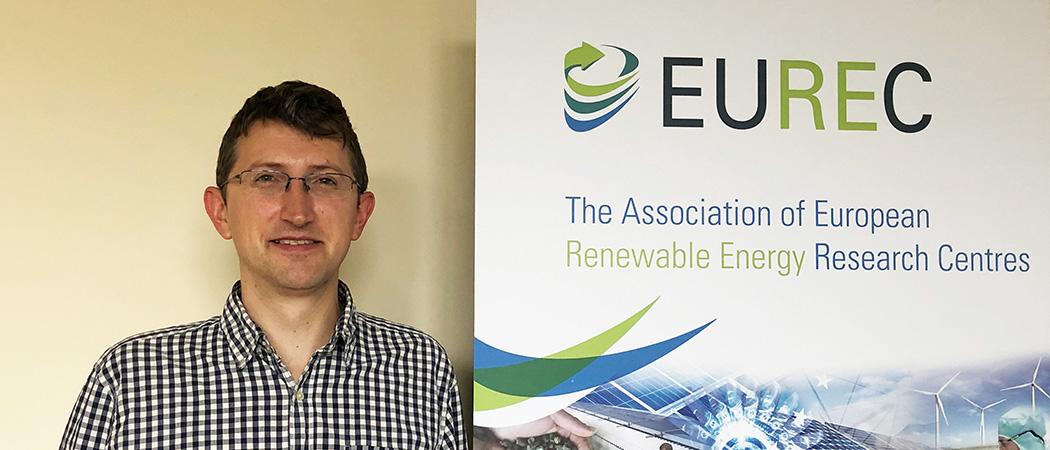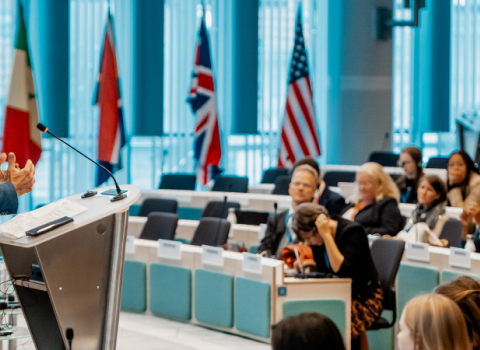Upcoming changes to the EU Renewable Energy directive will set new production targets. But with a few additional adjustments, the directive could also drive the development of completely new forms of renewable energy

Greg Arrowsmith, secretary general of EUREC.
The EU Renewable Energy directive is about to get an upgrade. The current goal is to have 32% of EU energy produced from renewable sources by 2030, but the European Commission wants to boost this to 38 - 40%, under proposals to be tabled on 14 July.
Which begs the question: will the upgraded directive merely deliver more of the same, or will it contain any measures to promote innovation - and in particular - the development of new sources of renewable energy? The answer is, too few.
But first, the good news. The 2020 strategies for energy system integration and offshore renewable energy will shape the directive. So expect proposals on open access to data on the state of charge and other critical characteristics of batteries, and on measures to promote thermal energy storage. In addition, support for offshore renewable energy sources, such as wind power, should include moves to better integrate them with the continental power grid.
These measures are focussed on installation and use of renewable energy. Innovation upstream, in the means to provide this energy, is much less well supported. A target will be proposed for advanced biofuels and (new) renewable fuels of “non-biological origin”, such as those based on hydrogen.
But the cupboard is bare when it comes to advancing technologies for generating electricity, heating or cooling.
That cupboard needs restocking. Last September, the European Commission slammed the national Energy and Climate plans of member states, saying they failed, “to pay sufficient attention to research and innovation needs for delivering on climate and energy objectives.”
Overall, the plans revealed a “decrease in national budgets devoted to research and energy in clean energy technologies and a severe lack of national objectives and funding targets that show concrete and relevant pathways to 2030 and 2050,” the Commission said.
A colossal amount
Here’s how to fix things: setting a target for advanced fuels is good, but it should be more prescriptive. The target of 38 - 40% could create a colossal amount of new capacity. A small proportion of this should be earmarked as having to be produced by innovative technology.
New technologies need a pull from the market as well as a push from the lab. Setting aside even a fraction of total spending in this category, such as 0.5% - 2%, would prod governments to think of specific strategies for commercialising new technologies, without standing in the way of established technologies doing the bulk of the lifting, ensuring the overall target is met:
- Member states could have the first say in which technologies they apply to meet the 0.5-2% goal. They could use updates to national Energy and Climate plans, due in 2023, to report planned deployments of advanced renewable energy technology;
- The Commission could assess member states’ choices using the Emissions Trading System’s Innovation Fund criteria for ‘degree of innovation’. A caveat: the qualification as ‘innovative’ with respect to the Renewable Energy directive could be lower than the qualification for the ETS Innovation Fund, allowing for greater freedom;
- Member states could update their national Energy and Climate plans based on the Commission’s assessment;
- If the EU-level 2030 target for innovative renewable deployment is at risk of not being met, the Commission can ask individual member states to take additional measures to support renewable energy projects. The Commission could even itself tender support for innovative projects, under the additional funding mechanism described in Article 33 of the Governance Regulation.
Incentives to share data
Improved and cheaper data acquisition methods, big data and artificial intelligence are changing all aspects of the renewable energy business. But as it stands, the revised directive is underestimating the role they could play in reducing the cost of reaching deployment goals.
One way to drive improvements in technology performance is to analyse data from machines operating in the field. That already happens of course: companies analyse data from their own devices or systems. But they keep the data to themselves. Collectively, Europe’s renewable energy industries could advance faster if that data was shared with peers or trusted external researchers. The more high quality data available to analytical tools, the better insights those tools can provide.
An incentive is needed for companies to be able share high quality data, if they so wish. This could be outlined in the action plan on Digitalisation of the Energy System, due for release by the Commission in 2022. But the directive (and also the Climate, Energy and Environmental State aid guidelines – due for revision in 2021) needs text that will allow it to incorporate recommendations from the plan.
The emergency of global heating compels us to search harder and faster for new technology, and make better use of data, to address this problem. Another opportunity to lock in measures that drive innovation in the all-important renewables directive or state rules might not come along for several years. Lawmakers must act now.
Greg Arrowsmith is secretary general of EUREC, the Association of the European Renewable Energy Research Centres





 A unique international forum for public research organisations and companies to connect their external engagement with strategic interests around their R&D system.
A unique international forum for public research organisations and companies to connect their external engagement with strategic interests around their R&D system.